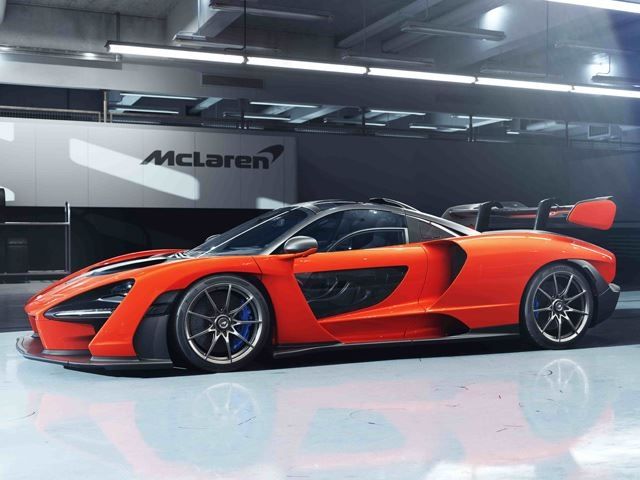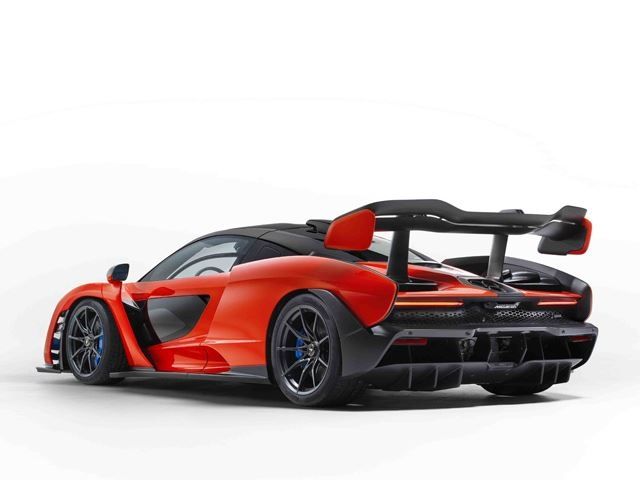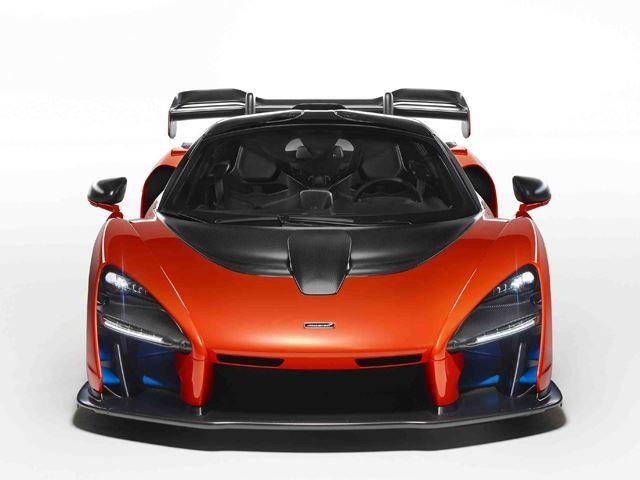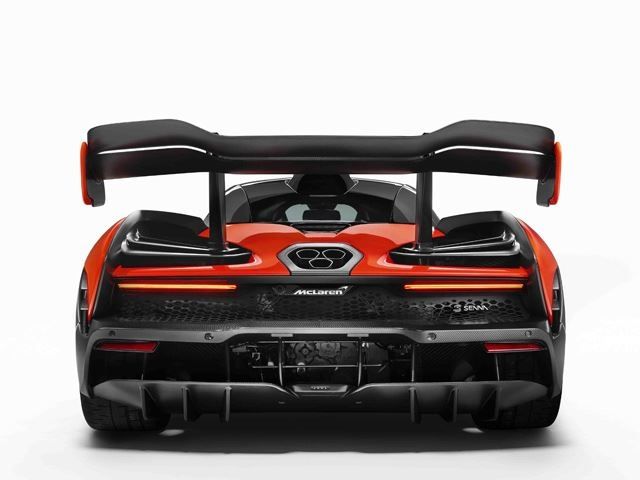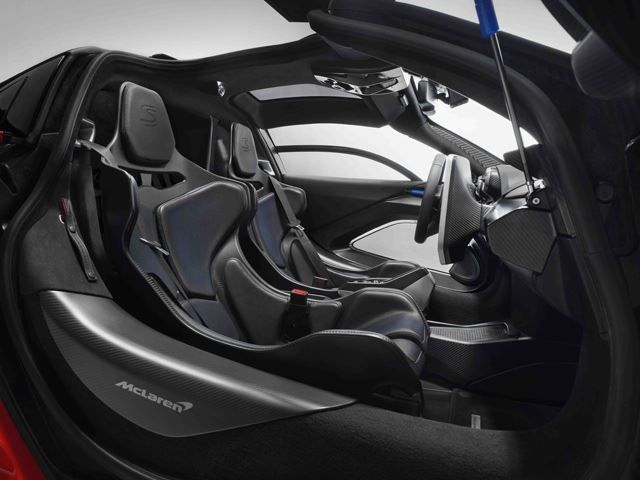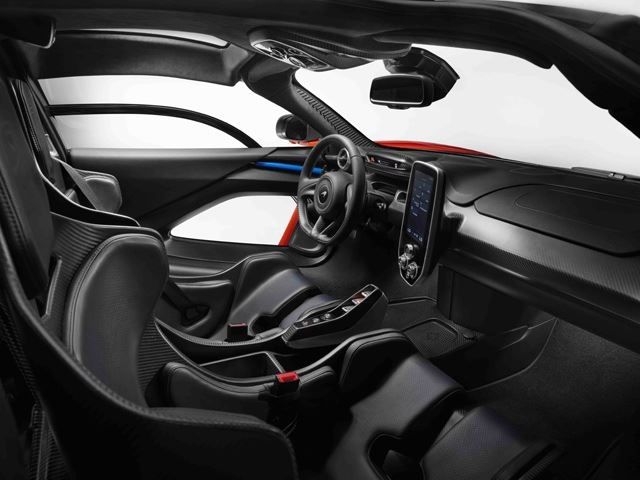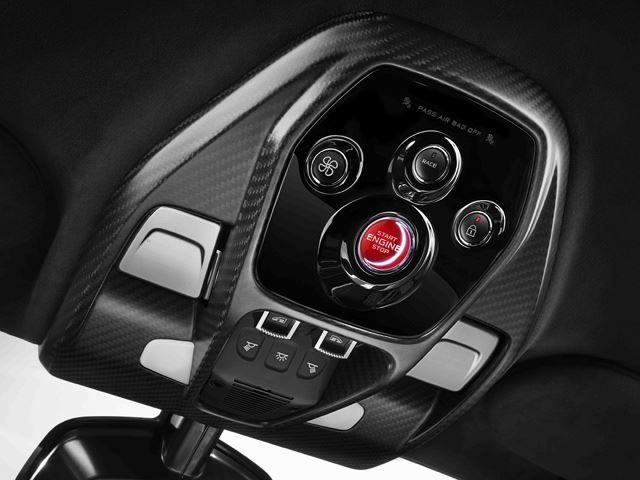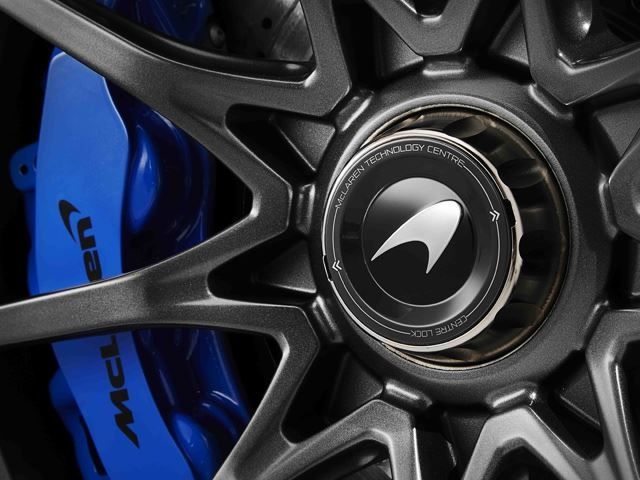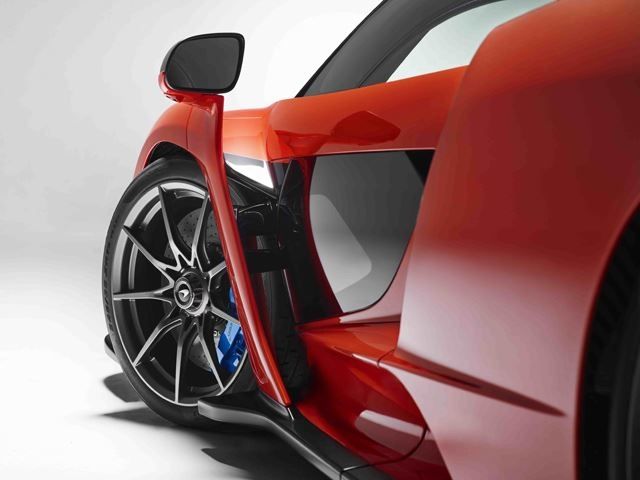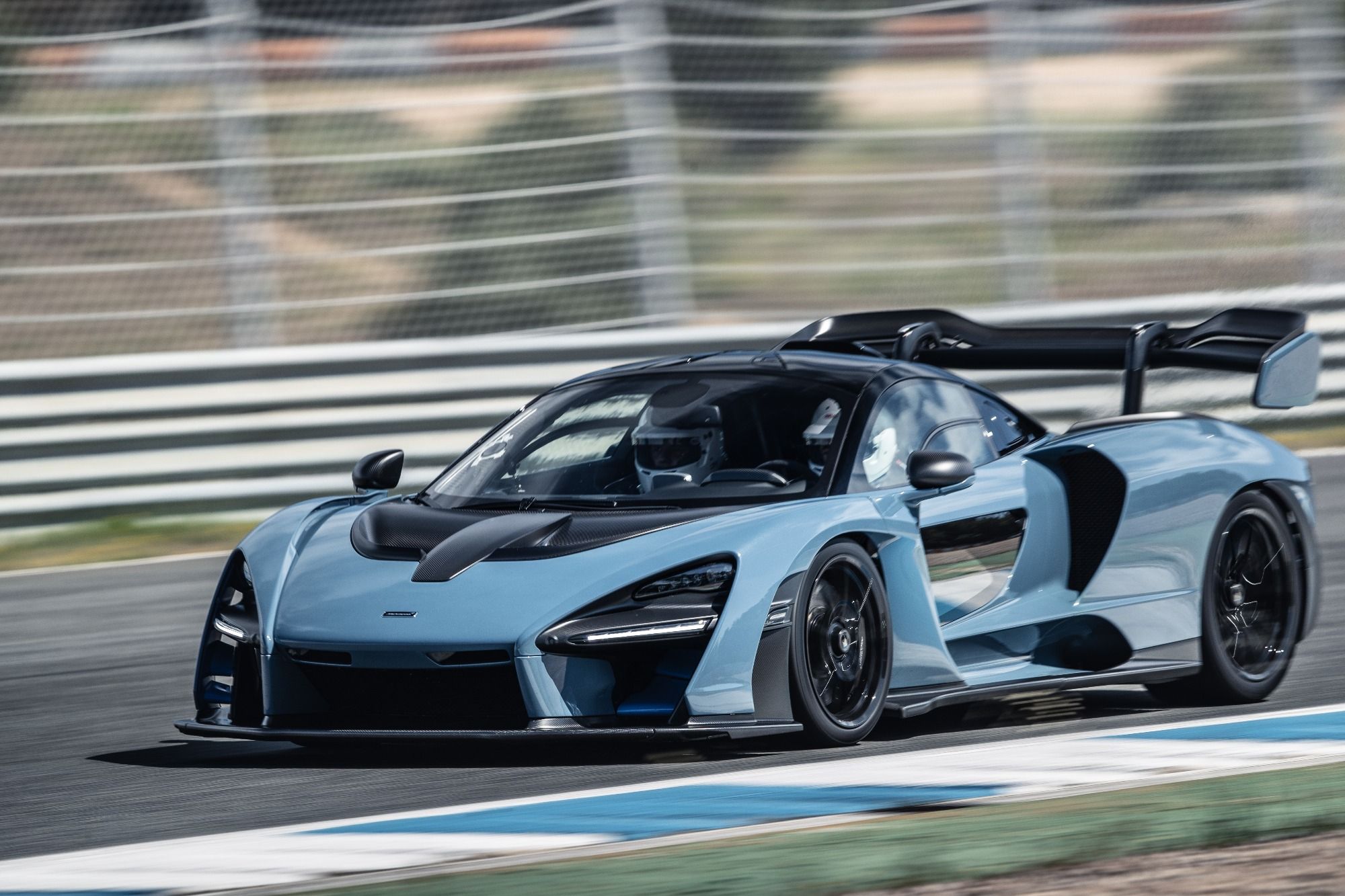
What you're looking at is the most extreme road-legal McLaren of all time. The McLaren Senna, named for Formula 1 legend Ayrton Senna, is everything we could have hoped for and more. Powered by a 4.0-liter twin-turbocharged V8 with 789 hp and 590 lb-ft of torque, the Senna, formerly codenamed P15, is, at 2,641 lbs., McLaren's lightest road car since the iconic F1. It's also has the UK firm's most powerful internal combustion road car ever. That's right. There is no electric hybrid boost or batteries.
All of that power is directed to the rear wheels through a seven-speed dual-clutch gearbox, complete with elongated carbon fiber shifters that can be used with or without racing gloves. The Senna has three drive modes: Comfort, Sport and Track. McLaren promises immediate throttle response and "neck-snapping" performance in all modes.
McLaren claims it'll achieve the quickest lap times of any production McLaren to date. Expect official performance figures to arrive next month. Expect P1-like straight-line performance, but its track times are the focus. However, the Senna is not a direct successor to the P1; it's just a different type of hypercar. In order to achieve that lightweight, McLaren claims it utilized a new, third-generation version of its highly regarded Monocage chassis, along with extensive use of carbon fiber inside and out. There's also a hydraulic double-wishbone suspension system called RaceActive Chassis Control II, which works directly with the front and rear active aerodynamics systems.
The carbon ceramic braking system is the most extreme of its type fitted to any McLaren road car. Ultra-lightweight centerlock alloy wheels wearing Pirelli Trofeo R rubber are at all four corners. Step inside and you'll find a track-focused cabin. For example, only the seats, dash and side airbags are covered in either leather or Alcantara. There's absolutely no room for luggage, or just about anything else that's not the one or two human occupants. There is, however, a small space behind the seats for a pair of racing suits and helmets. The driver will enjoy the central infotainment screen and high-definition McLaren Folding Driver Display. Note the lack of buttons and switches on the three-spoke steering wheel and the ceiling-mounted ignition.
The exterior, an aerodynamic masterpiece, features a unique front splitter, rear double diffuser and a hydraulically actuated, 48-inch tall rear wing. It constantly adjusts based on what the car is doing, and can even act as an airbrake. The rear clamshell was designed to cool the engine and also to provide necessary downforce. There also Gurney flaps located in front of stepped louvers that direct air to the sides, and a roof-mounted 'snorkel' intake. As part of the Ultimate Series, which includes the P1 and P1 GTR, production will be limited to just 500 units. Each will carry a base price of 750,000 GBP, or roughly $1,003,950, including taxes. The McLaren Senna will make its live public debut this March at Geneva.

